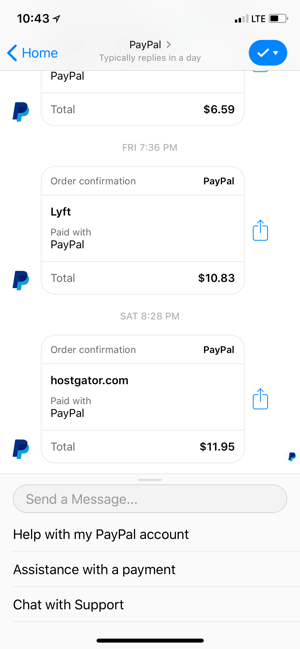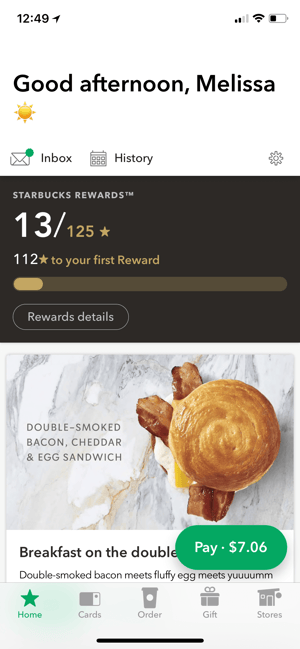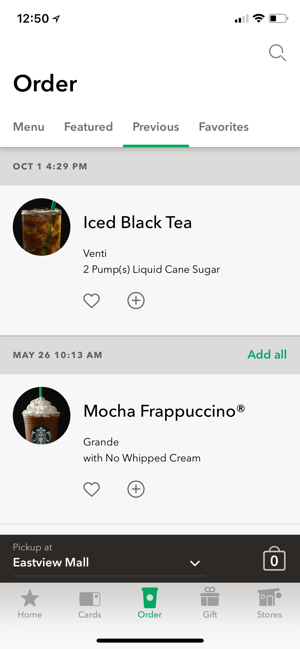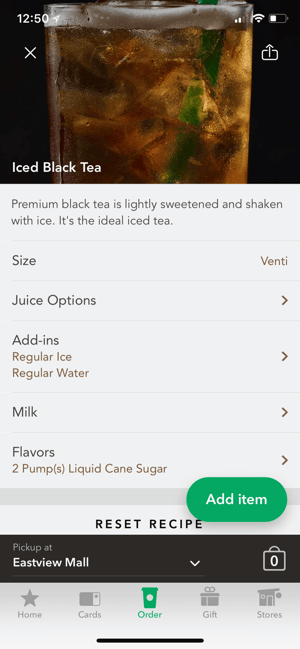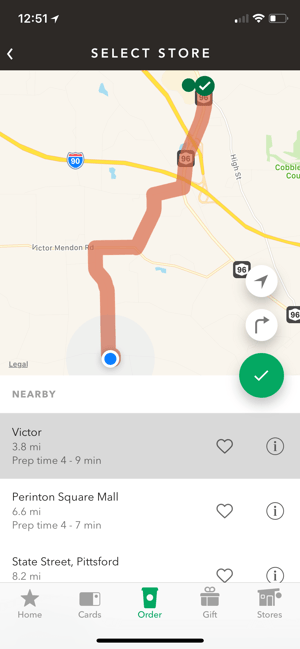A few weeks ago, I was talking to a friend about nutrition. I expressed my frustration about staying on top of calorie count, levels of sodium, cholesterol, etc.
"Oh, well have you heard about MyFitnessPal?" she asked.
I had heard the name, but didn't know it was an app. She explained that she had been using it for months to manage her weight.
I'm not an app person, but I hesitantly downloaded it. Over the next few days, I tracked my meals day-by-day.
Then, something extraordinary happened.
I actually stayed beneath my recommended calorie intake level. I stopped eating stuff with so much salt. I physically felt better and even slept better. I finally felt like I had a grasp on my nutrition.
With this data in hand, I wanted to learn more. I downloaded another app to track my sleep settings. I even started looking at buying a Fitbit to connect and get even more data. Since I could do all of this from my phone, tracking my diet was easier and sometimes, even fun.
Best of all, the app helped me stay on track. With a database of over 19.1 million users, there's a lot of trust and accountability in the process. The MyFitnessPal community all contribute meal entries, creating a database crowdsourced food and snack entries. The users can confirm which submissions are correct. There's a sense of community that would be difficult to replicate if MyFitnessPal provided the information themselves.
That's how MyFitnessPal (owned by UnderArmour) does something that's difficult for a lot of other brands. They successfully spread their brand awareness through their community and retain users with an easy-to-use platform. They master the brand communication strategy. And if you follow in their footsteps, you can, too.
Why Mobile Matters For Brand Communication Strategy
In theory, the MyFitnessPal app doesn't seem that revolutionary. It's basically a calorie counter, right? That's why if you already have a website that's generating decent results, investing in a mobile app may not seem like a top priority.
But the first thing to understand about a mobile brand communication strategy is that it's not only about apps. It's about the end user. On mobile, brands like MyFitnessPal, Starbucks and Uber make it as appealing as possible to become a customer. They merely use an app to facilitate that experience. It puts those brands in your pocket.
That's why establishing a mobile brand communication strategy is such a game-changer. If you can get your customers to engage with you from their phones, there is a ton of opportunity to drive sales, engagement, and more.
Here are a few reasons why a mobile brand community strategy could completely transform your marketing and sales initiatives.
#1. Your Customer Is On Their Phone All The Time
Your customer has their phone on them all the time. And the most recent phone usage statistics from a comprehensive Bank My Cell study back that up.
Every day, the average cell phone user:
- Spends 2 hours, 51 minutes on smartphones.
- Checks their phones 47 times a day.
- Picks up their device within an hour of waking up and use it within an hour of going to sleep.
The statistics are staggering (and have me rethinking how often I use my phone, honestly.) However, through a marketing lens, there's nothing but promise here.
You can create a strategy that:
- Extracts as much information as possible about how your audience uses their phone.
- Delights the customer and makes it easier for them to work with you.
You can also learn a tremendous amount from your audience and how they're engaging with mobile overall.
Are they more likely to book a demo from their phone or their laptop?
Will they finish reading an article when it's on their phone?
Additionally, mobile provides an opportunity to streamline communication with your customer. You can help resolve a lot of the friction that can occur through a traditional buyer journey.
For instance, I've had PayPal for years, but before I opted into their Facebook Messenger notifications, I rarely checked the account. Now, I rely on it for staying up-to-date on my finances.
Here's an example of an ongoing conversation I have with them over Messenger, a channel I swore never to engage with brands on:
I thought it would be irritating to get notifications here, but they're beneficial. I don't have to dig through my email for payment records, and I can quickly cancel old subscriptions or dispute charges as soon as they come through.
#2. Mobile Isn't Going Anywhere
Remember when people thought social media or content marketing was a fad? It wasn't, and neither is mobile. It's time to get on the bandwagon. Smartphones are only getting more sophisticated, and people will continue to use them in place of their laptops and desktops.
Apple sold 54.06 million smartphones in the first quarter of 2018 alone, sustaining their average YoY Q1 phone sales.
The reality is that phones are being used less for phone calls, and more as personal assistant devices. Cell phones help you stay on top of your email, work correspondence, appointments, finances, and personal development.
While you're doing all of that on your phone, companies like Starbucks figure, you may as well order coffee there, too. They provide can be easy and fun. Their ordering experience is seamless, and personalized just for me.
With the Starbucks app, I get a complete overview of my account. I can quickly order something new, or a drink I've enjoyed previously. Then, Starbucks stores my order. It joins a collection of apps that are helping manage Planet Melissa. MyFitnessPal tracks my nutrition and diet progress, Credit Karma monitors my credit, and I can use my smart home devices from my Nest application.
Each app is a part of my mobile ecosystem.
If you want to be a part of your customer's mobile ecosystem and provide answers, solutions, or assistance, you need to find a way to integrate your brand into their mobile experience just like Starbucks does.
#3. People Are Pulling Up Content On Their Phones
In the last day, you've read, listened to, or watched something on your phone, right? I've turned on a few Steve Nicks songs on my iTunes app, watched a video on the CNN.com app and read an article about Dave Ramsey. Your customer is engaging in similar activities.
Your job is to figure out what those activities are, and use those insights to create your content. A lot of brands do this very well. All you need is exceptional content that you can then optimize it for small screen size.
Here are a few examples I like a lot:
Lonely Planet
Lonely Planet has a series of travel guides, including this one for Akureyri, Iceland. When I visited Akureyri years ago, Lonely Planet didn't have this content yet, which is a shame. The guides are minimal and organized intentionally for a device, which is perfect for on-the-go explorers.
The guides are only available through their Guides app and make it very easy to get to know a new city, fast.
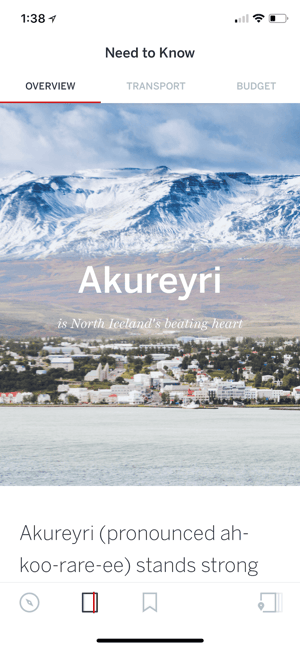
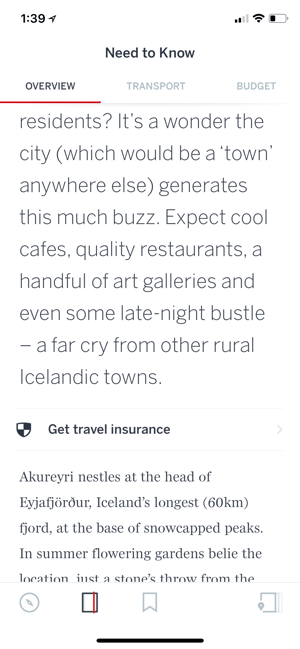
Any B2B or SaaS company could mimic this style for .pdfs, guides, long-form blog content and more.
NPR One
The NPR One app is used to listen to the local public radio. If you're embedding a podcast into your website, this format and style are perfect for mobile because it's intuitive and straightforward to use.
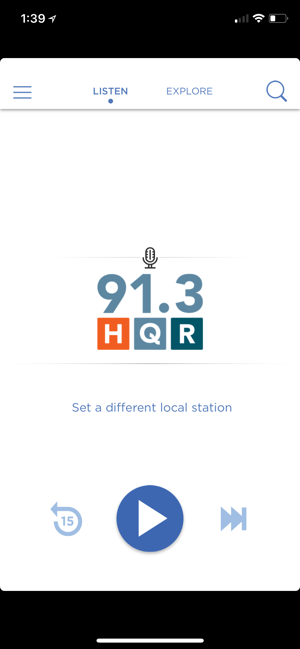
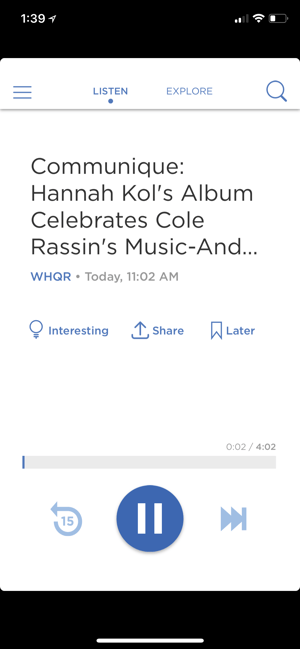
I can share this particular podcast or save it for later.
Despite the different formats, the controls on both content assets make it easy to scroll, click, read, and listen. The text is clear, and there are a minimal number of images and icons. The result is a nice clean look, which is essential. Even the smallest optimization oversight, like text that's too large or images that won't load, will deter a customer.
#4. If You Don't Get Them On Mobile, You Lose Them
How often have you pulled something up on your phone, only to forget about it later? How many times do you close out of a window because it was too difficult to fill out a form, set an appointment, or zoom-in on a website page?
If you're anything like me, it's often. If I visit a website and experience difficulty using it on my phone, I leave. I rarely revisit anything on my desktop because I'm busy and when it comes to content I find online, I have the attention span of a goldfish. I need it to work the first time, or I'm gone.
Forms must be easy to fill out (this is a big pet peeve of mine). Any phone number should be formatted to pull up on their device when they tap on mobile (another pet peeve). Articles must be easy to share to any social channel (I'm just full of pet peeves when it comes to my phone, obviously).
I think the Starbucks ordering process is stellar because it's swift and I can do it in a few steps.
I can customize my order without trying to speak over other customers or the music playing in the store.
It even pulls in location data to figure out where I am and where the closest Starbucks locations are.
Every step of the process is curated just for me. But even the best mobile experience doesn't guarantee I'll keep using the app, right? Starbucks already thought of that.
That's why I get points whenever I order from the phone, which adds up to free drinks and snacks. It keeps me coming back to the app and retains me as a Starbucks customer. It's called lifecycle marketing, which is the practice of attracting, acquiring, and delighting customers.
The Next Era of Mobile
Your mobile brand communication strategy is critical because of one reason. Phones aren't phones anymore. Phones double as our sidekick, our Rolodex, our trainer, our financial advisor, and of course, our barista. And this is only going to continue. With more brands making significant investments in the mobile experience, if you don't get ahead now, you'll be behind.
That's why mobile needs to be a part of your marketing and inbound objectives. If you can weave the mobile experience into your customer's buyer journey, you can provide another way for them to understand the value of your service. You can earn their trust and most importantly, get into their pocket. To learn more about creating an inbound strategy that supports the buyer journey, check out our free guide, Conquering The Inbound Marketing Mountain.




